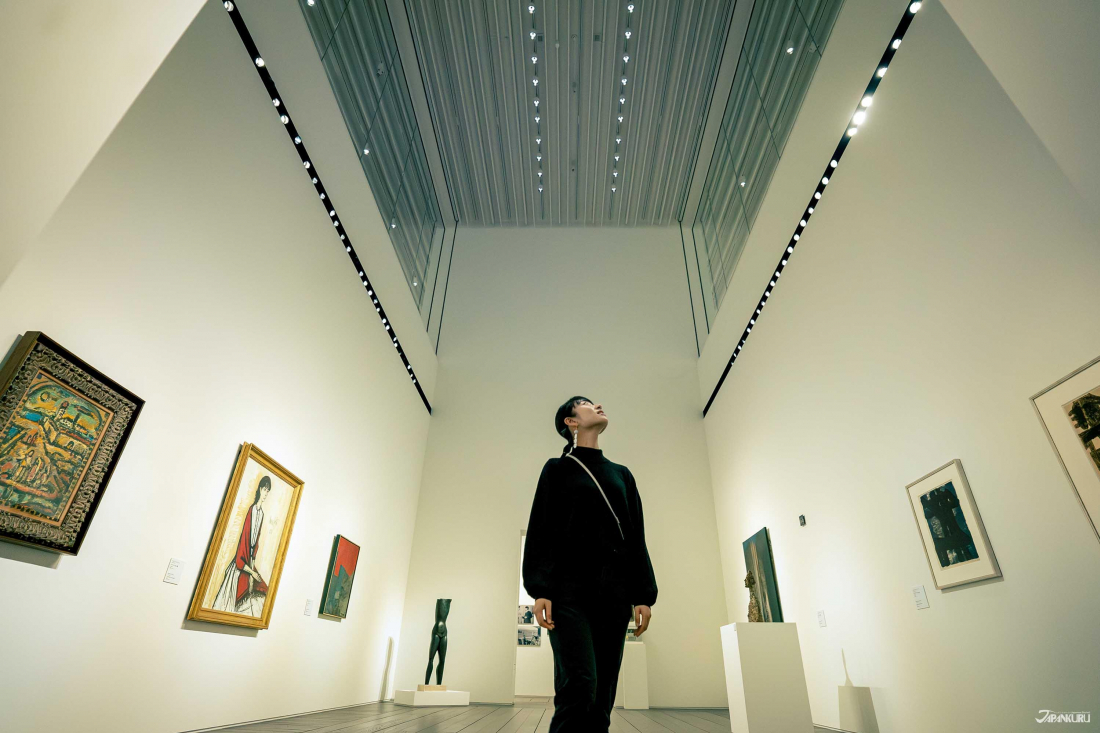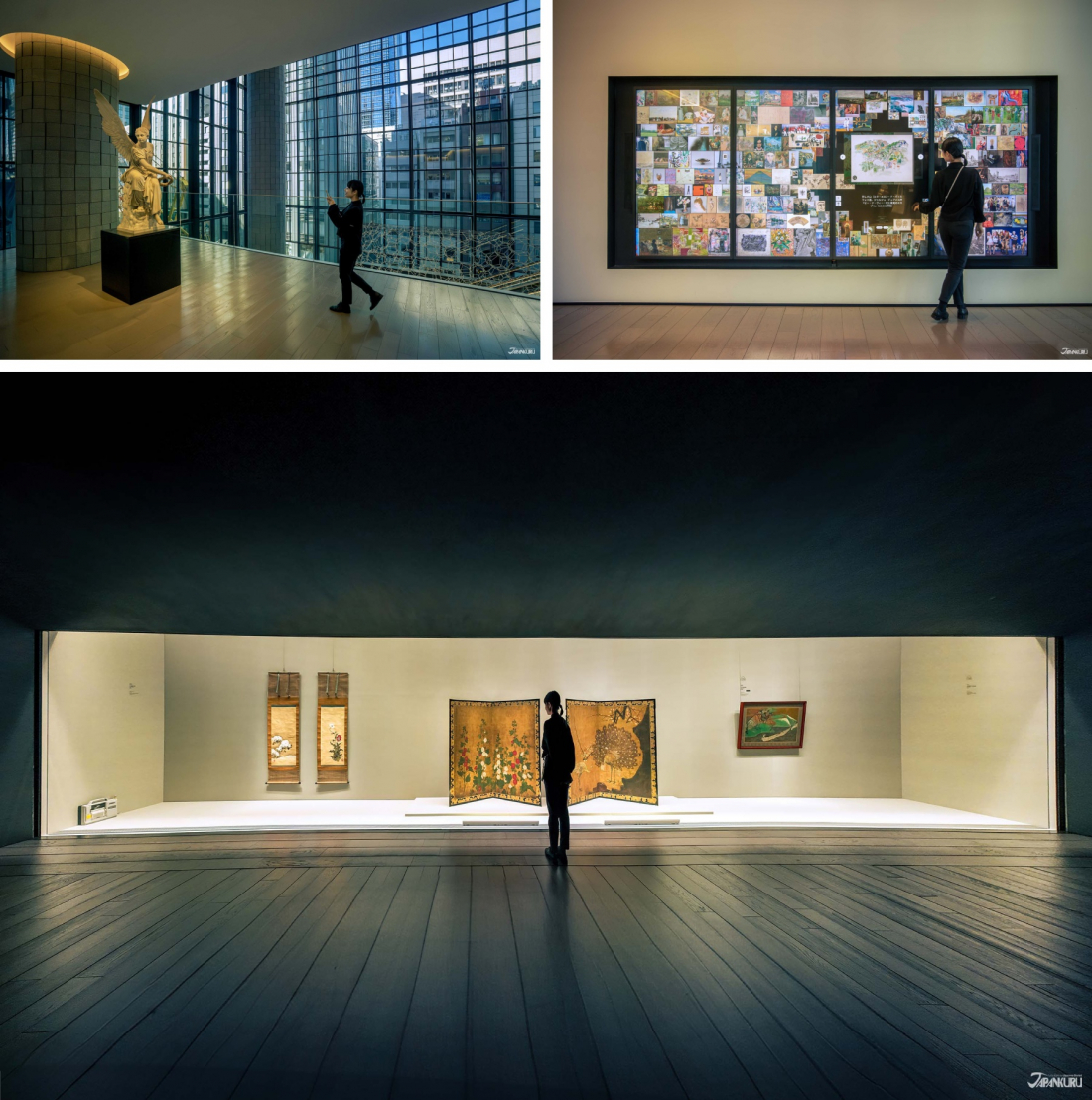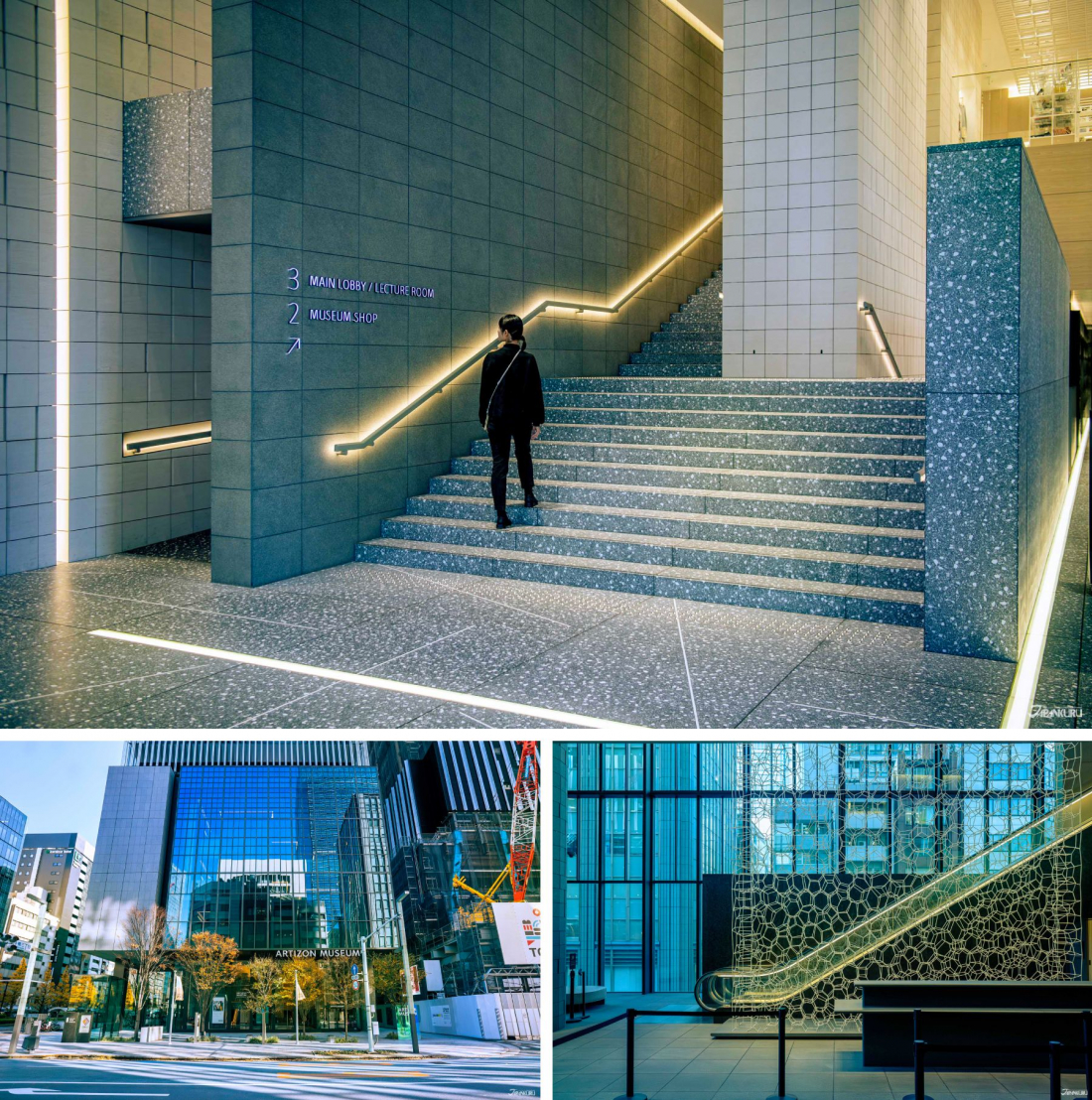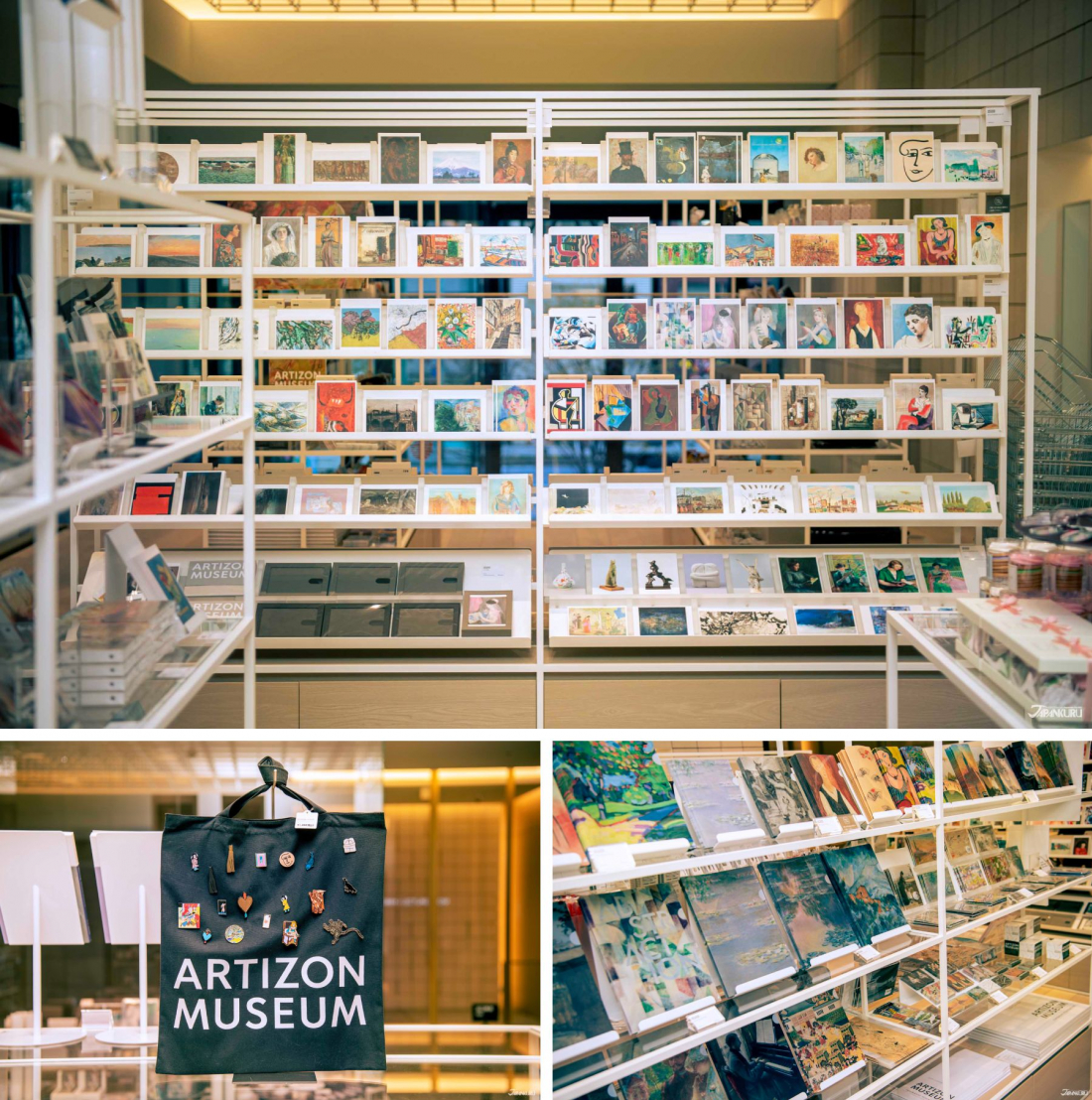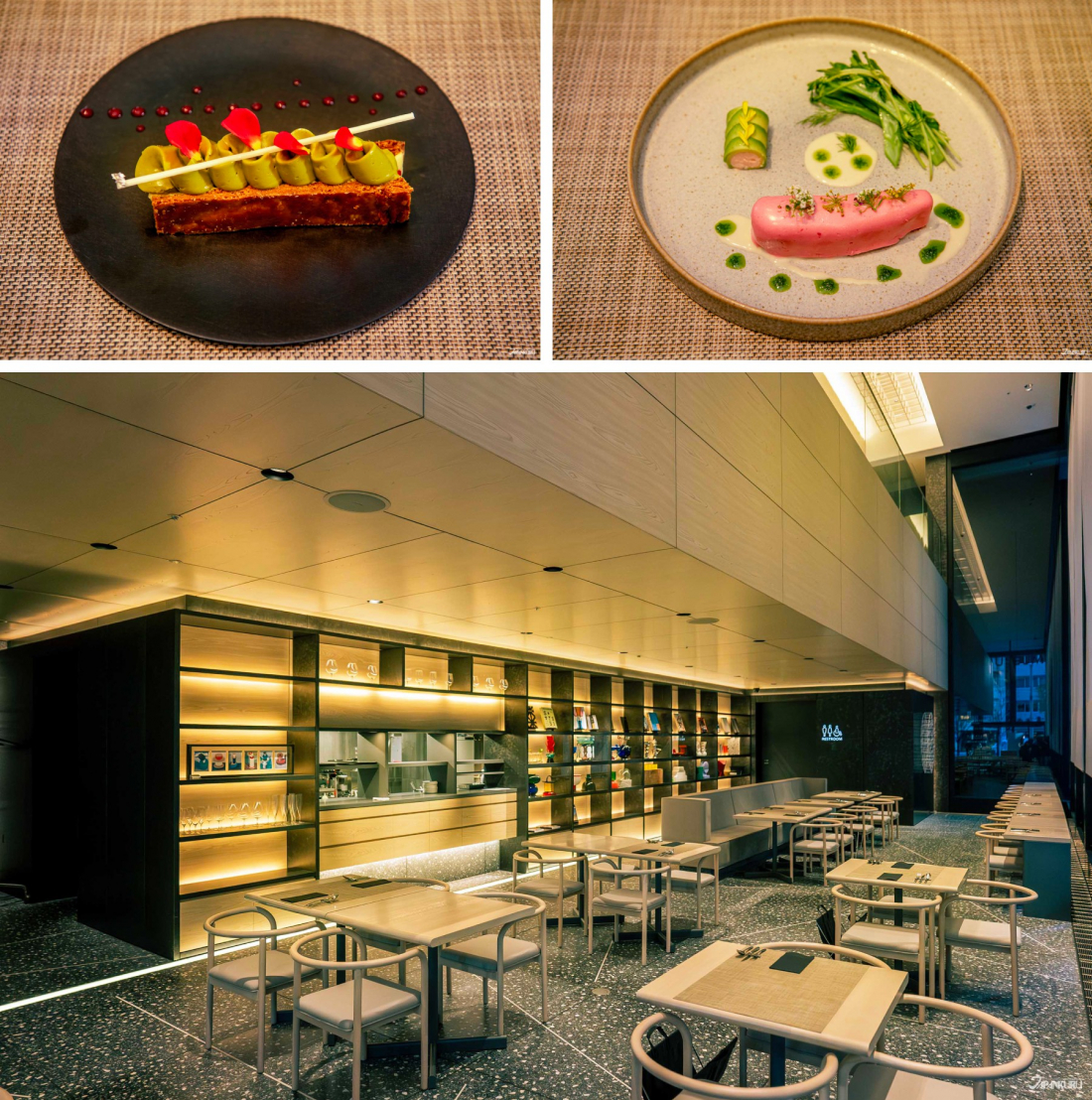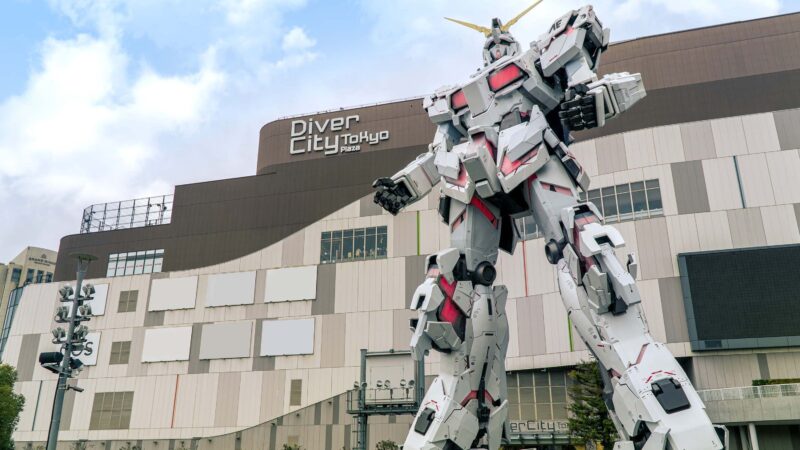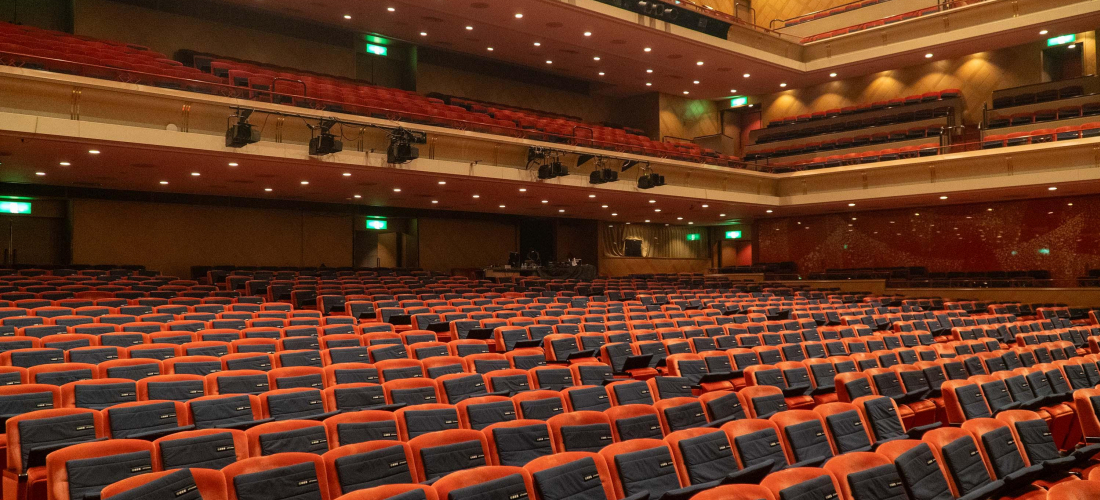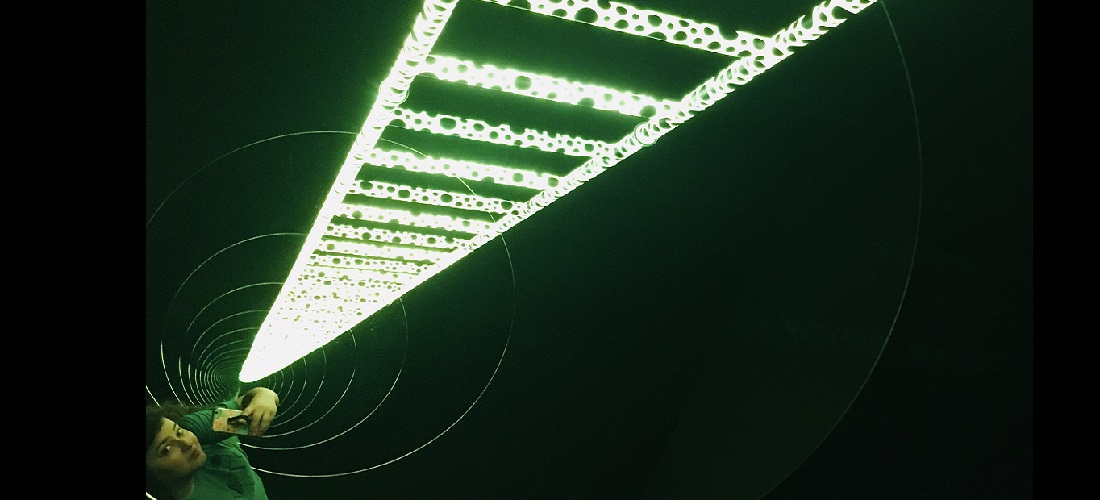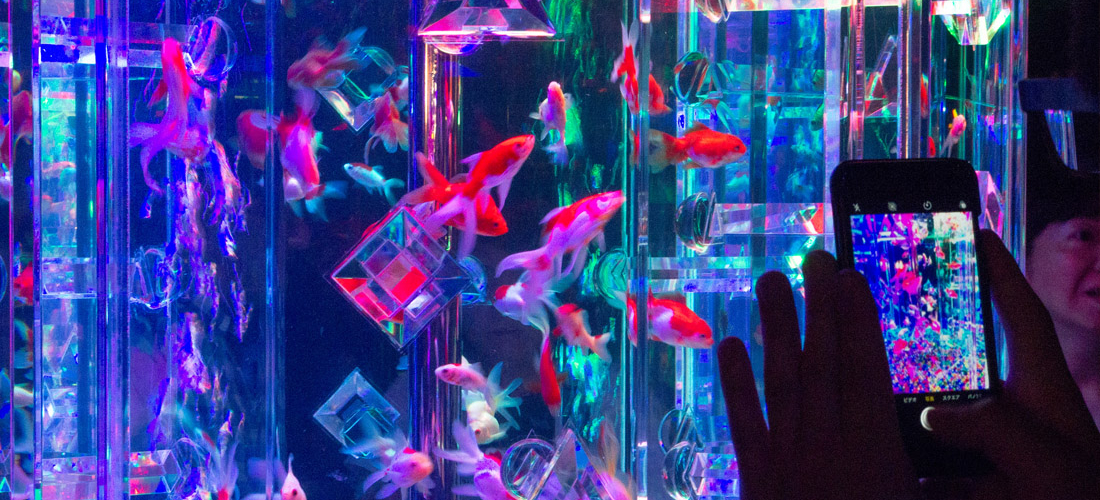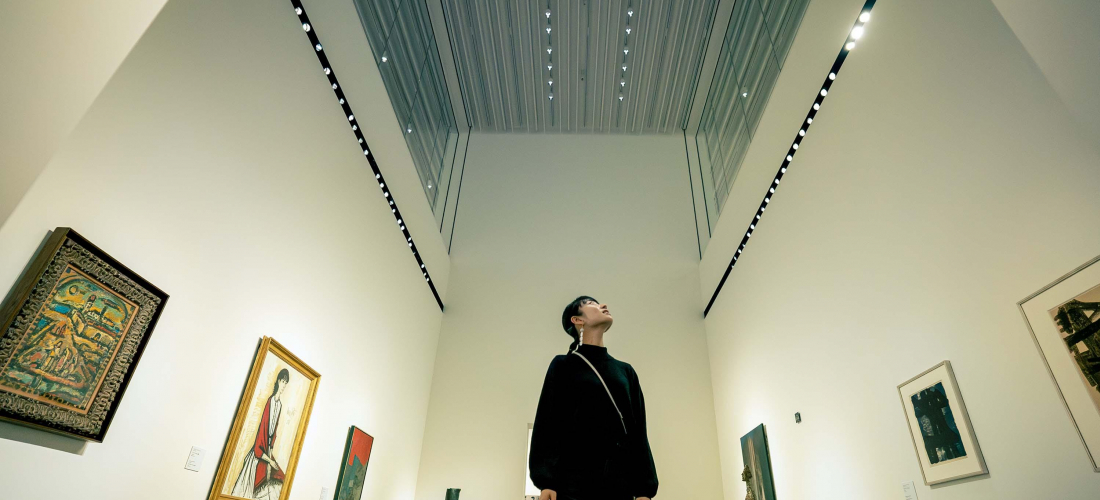
CONTENTS
This must-see Tokyo art museum presents carefully curated European and Japanese art exhibitions and more, giving sightseers a chance to enjoy fine art conveniently close to Tokyo Station’s trains and shinkansen lines. Make this Tokyo Station art museum a relaxing stop on your journey through Japan!
The Artizon Museum: Art in Kyobashi, From Around the World
Located just steps from Tokyo Station, the Artizon Museum is tucked in among the tall office buildings and high-end department stores around Kyobashi, but this striking building holds a treasure chest of Impressionist works, Japanese Western-style Yoga (洋画) paintings, and an ever-expanding variety of art from throughout the ages. The Artizon name comes from a combination of "art" and "horizon," and this museum lives up to that name by pushing its collection in all directions, broadening the art horizons of any who visit. From traditional Japanese painted screens to dreamy Monet landscapes, and even cutting-edge artwork from Japan's contemporary artists, the Artizon Museum is striking its own path in the art world, and it's worth a look next time you're in Tokyo.
From Bridgestone Origins to New Horizons
The Artizon Museum's history began in the mid-20th century, when Shojiro Ishibashi (founder of the tire-producing Bridgestone Corporation) took his private art collection and opened it to the public with a museum on the second floor of Kyobashi's newly-built Bridgestone Building. But Ishibashi's passion project soon took on a life of its own, and within a few years the Ishibashi Foundation was established to grow and develop the museum as its own enterprise. Over the decades the Bridgestone Museum of Art evolved and its collection expanded, and by the year 2015 it was time for a major change. The old building was finally torn down, and construction began on a brand new space for this Tokyo art establishment. With a new name and a new outlook, in 2020 the museum reopened as the Artizon Museum in the new Museum Tower Kyobashi, where it now stands as the heart of a boom in art and culture around Tokyo Station.
Artizon Museum (アーティゾン美術館)
1-7-2 Kyobashi, Chuo City, Tokyo
Hours: 10:00 – 18:00 / Fridays (except national holidays) ~20:00
* Last entry 30 minutes before closing.
* Closed Mondays, or the following weekday when Monday is a national holiday.
Tickets:
・Tickets available online via the museum website. Tickets may also be available from the ticket desk if the current time slot is not full.
・Admission varies depending on the exhibition, but elementary and middle school students enter free with a student ID.
・Advance reservations required, except for children in middle school or below.
Official Website (en)
The Artizon Museum Collection
The Artizon Museum has three exhibition floors, and none of that space serves as what you might call a permanent exhibition, although the museum always makes sure to show off some of the stars of its own collection. Visitors will often find one or more floors devoted to exhibitions like "Selections from the Ishibashi Foundation Collection" (current at time of publication), which rotate through a number of the museum's many masterpieces, displaying different pieces throughout the year to give each work its moment in the spotlight. These exhibitions feature the likes of Monet and Manet, Cézanne and Matisse, Cassatt and Degas, Renoir, Van Gogh, Picasso, Kandinsky, and many other big names in Western art from the past century or two, which makes Artizon Museum feel like a slice of heaven for fans of Impressionism and other Modern art. But those stars of European art are just the names that foreign visitors are most likely to be familiar with. The Artizon Museum's exhibitions also include a generous selection of Japanese art, with a focus on Modern paintings, especially "Yoga" works painted using Western technique. Walking through the galleries, you're likely to run into a piece or two marked "Important Cultural Property" (重要文化財), an official label that signifies its importance in the world of Japanese art. Interested visitors can look out for the cultural touchstone "Reminiscence of the Tempyo Era" (天平の面影), a 1902 painting by Takeji Fujishima, or "A Gift of the Sea" (海の幸) by Shigeru Aoki from the same era. Exhibitions are kept cohesive and they flow naturally, but the variety inside each one lets visitors get a sense of what the museum is all about!
Through a series of special exhibitions, the Artizon Museum also uses its collection in new and different ways, often including pieces borrowed from other institutions to focus in on one theme or another. In recent years, one of their most frequently revisited topics has been women in art, including recent exhibitions like "Women Reading," which examined women and books as subject matter, but also "Marie Laurencin: An Eye for Her Time" (current at time of publication), all about the life and art of the Cubist artist Marie Laurencin and the unique directions she took Modern art. The attentive and skilled curation of Artizon Museum's special exhibitions offers visitors a chance to enjoy the museum's art from a new perspective, and become familiar with new artists too!
The Artizon Museum's aim to expand its scope is clear in some of the exhibitions it chooses to host, including yearly events focusing on fresh contemporary art from Japanese artists, but also in some of the building's less obvious nooks and crannies. Outside the main exhibition rooms, a European marble statue stands guard over the landing of the 4th floor ("Victoria" by Christian Daniel Rauch), while the "Goddess Sekhmet" (3,400 years old and all the way from Luxor) watches over the 5th floor with the head of a lion. Photographs are usually allowed in all of the museum's exhibition galleries (although some pieces are off-limits), but these noble goddesses offer some of the most popular photo spots in the museum!
Not far from Victoria's domain, one small gallery room often features works that differ a little from the surrounding exhibition, taking advantage of one enormous 15-meter pane of solid glare-proof glass that seems to disappear in the dark room, revealing brightly lit art. Search it out, and you'll be treated to a view of precious works of art like centuries-old Japanese painted screens, carefully protected by the glass, but vibrant and beautifully visible behind the disappearing barrier.
Visitors interested in learning more about the art can also download the Artizon Museum app on their phones entirely for free, to read or listen to additional information about many of the works on display. (Available in Japanese, English, Chinese, and Korean.) The app uses location information to suggest pieces you might want to hear about, and the English audio guide narration is very high quality (read by professionals), so it's a pleasure to listen to! (Just remember to bring your earphones along!)
A Building That’s Part of the Art
While the Artizon Museum's fabulous collection is probably the aim of most visitors, the museum building and its purpose-built architecture not only shows the art to its best advantage, but it's also worth admiring in and of itself. Designed by Japanese firm TONERICO: INC, the museum fits right into the urban landscape with its sleek glass facade and chic grey interiors, and each design choice appears to have been made to make the museum interesting to look at without distracting from the art inside. (Fans of TONERICO: INC will enjoy the general atmosphere, but should also keep an eye out for their large "Foam" piece on display behind the cloak counter on the 3rd floor!) When the Artizon Museum had a chance to build a brand new building, they took full advantage, and chose the best materials available with the hope that the facility would look just as elegant to visitors in the mid-21st century as it does today. Unlike many Japanese art museums, the Artizon Museum employs a comprehensive creative director to keep the entire museum cohesive.
They clearly made some good choices, because on every trip up and down the museum's escalators, at least one member of the Japankuru team couldn't keep his eyes off of the random texture of the tiled walls.
The Artizon Museum's spacious art galleries are set up with adjustable walls, and the museum staff clearly play with different wall setups to create spaces of different shapes and sizes, allowing for all kinds of art. Gallery room features, like a small atrium space connecting the fourth and fifth floors looking down into the gallery below, allow visitors to admire the art from an angle they rarely see. Even the seating adds to the experience, thanks to a number of chairs and sofas from famous Japanese designer Shiro Kuramata. But when the Japankuru team decided to take a short break and refresh our eyes, we loved the "View Deck" running along one side of the building, where benches are placed facing floor-to-ceiling windows that let the city outside become another piece in the museum collection. (There are even electrical outlets available if you took too many pictures and need to charge your phone!)
The Museum Shop & Cafe
For art and design lovers, the Artizon Museum's gift shop offers a truly tempting selection of products, many of which are based directly on pieces in the museum collection. Alongside a selection of aesthetically pleasing postcards and keychains, the museum also has enamel pins featuring individual animals and items featured in the art, wooden toys based on characters in paintings, and stationery produced in the color schemes of popular works. There are also art prints of all sizes, cute sets of crayons and colored pencils, and even items like tea or hand cream (chosen to match the art, of course). The museum often offers items themed around their special exhibitions, too, so you'll want to go back every time you visit.
The Artizon Museum Café is in the lobby on the ground floor, and it's popular with both museum guests and also locals looking for a slightly upscale drink or bite to eat. (It's so popular at lunchtime that people often make reservations, which staff will recommend you do if you definitely want to go!) During lunch (11:00 – 14:30), the cafe offers multi-course meals which take inspiration from Japanese and European cuisine. The menu features luxurious dishes like "salmon chaudfroid and avocado roll with marinated green beans," "homemade tagliatelle with cream of porcini mushroom sauce," and "roasted venison with beetroot and squash puree and sauce of mixed berries," each one plated with an haute cuisine flourish. For their afternoon cafe hours (14:30 – 18:00), there are full afternoon tea sets (reservations required), but also light savory options, and some decadent desserts like the "strawberry and pistachio millefeuille." (The menu changes seasonally and often reflects the art currently on display, so options may vary.) It's a rather luxe place to relax after enjoying the art, but it's certainly worth a visit, and for museum-goers who just want to enjoy the atmosphere we can also recommend their elegant drinks. The Japankuru team especially enjoyed the "ruby elderflower" drink being offered for a limited time alongside the Marie Laurencin exhibition.
A Tokyo Station Art Museum to Expand Your Horizons
With a deft hand, the Artizon Museum's curators seamlessly bring together art from all over the globe to appeal to passionate art lovers and welcome newcomers at the same time, and their plans for the future have the museum expanding even further. The Artizon Museum is already a member of the "6 Museums.Tokyo," a group of six museums around Tokyo Station (which offers route recommendations for art lovers and sometimes shared discount tickets), and those in charge of the museum are making strides in establishing the Tokyo Station area as a center of arts and culture in Japan. For fans of Impressionism and Japanese art, the Artizon Museum is an obvious choice, but anyone with an interest in art can enjoy the interesting perspectives and artistic diversity that the museum presents. As a stop on the way to the shinkansen in Tokyo Station, or part of a whole day of art in and around Kyobashi, visit the Artizon Museum next time you're in Tokyo!
For more info and updates from Japan, check Japankuru for new articles, and don't forget to follow us on X (Twitter), Instagram, and Facebook!
PROFILE
Follow us @Japankuru on Facebook, Instagram, and Twitter!
COMMENT
FEATURED MEDIA
VIEW MORE
・Accommodations for Odaiba Sightseers: Mitsui Garden Hotel Toyosu PREMIER ・住宿推薦 三井花園飯店 豐洲普米爾 ・오다이바 관광 맞춤 숙소: 미츠이 가든 호텔 토요스 프리미어 ・ค้างคืนที่ Mitsui Garden Hotel Toyosu Premier โรงแรมสำหรับผู้มาเยือน Odaiba #japankuru #odaiba #tokyo #tokyotrip #japantrip #japantravel #mitsuigardenhotel #mitsuigardenhoteltoyosupremier #tokyohotel #odaibahotel #toyosu #tokyoview #tokyobay #rainbowbridge #미츠이가든호텔토요스프리미어 #오다이바 #오다이바맛집 #오다이바건담 #오다이바해변공원 #오다이바야경 #오다이바온천

Nagano Prefecture is famous for delicious soba noodles, and in the city of Ueda, you can learn from the experts! Local aunties run this cooking class, teaching you everything you need to know to make your own delicious plate of soba noodles entirely from scratch. #japankuru #soba #sobanoodles #japanesefood #travelexperience #japan #japantrip #ueda #nagano #japaneseculture #japanexperience #daytrip #daytour #cookingclass #japanesecookingclass #上田市 #そば作り #소바체험 #우에다시 #나가노여행 #일본소바

Kuramae Shrine is known for its early-blooming cherry blossoms and its gorgeous golden mimosa blooms, making it a great sakura spot for travelers arriving in Tokyo a little early for the main cherry blossom season. It’s also tucked away in a neighborhood packed with trendy cafes and coffee shops. Kuramae is a lovely place to spend the day. 🌸☕️ ・ #japankuru #kuramaeshrine #kuramae #tokyo #tokyotrip #cherryblossom #cherryblossoms #mimosa #tokyocherry #花見 #蔵前神社 #ミモザ #桜 #東京 #Japan #日本 #일본 #Japon #ญี่ปุ่น #Japão #Japón #япония #japantravel #日本旅行 #日本旅遊 #일본여행 #japan_of_insta #japantrip #traveljapan

Local Japanese Favorites at the Okinawa Don Quijote ② Ohta’s Isan, the digestive aid of the Japanese people ・ ・ 2024唐吉訶德不可不知的好物推薦② 日本國民消化小幫手:太田胃散 ・ ・ 오키나와 돈키호테 숨은 꿀템2. 일본 국민 소화제! 오타이산 #japankuru #okinawa #donki #沖縄 #오키나와 #오키나와여행 #오키나와돈키호테 #일본쇼핑리스트 #오타이산 #일본소화제 #太田胃酸 #ohtasisan

Happy Valentine's Day from the Japankuru team! May your day be full of sweet chocolates and sweet nothings. 💕 Or, if you're like a rising number of women in Japan, take the opportunity to treat yourself! 🍫💝💆 • Find out more at Japankuru.com! (Link in bio.) • #japankuru #valentinesday #valentineschocolate #japanesechocolate #japaneseculture #バレンタイン #バレンタインチョコ #メリーチョコレート #Japan #日本 #일본 #Japon #ญี่ปุ่น #Japão #япония #japantravel #日本旅行 #日本旅遊 #일본여행 #japan_of_insta #japantrip #traveljapan #japan🇯🇵 #japanlife #igerstokyo #explorejapan #japanfocus #enjoyjapan #japantravelphoto

Japankuru Coupon: BEAMS fashion, accessories, lifestyle goods, and more! BEAMS 5% Discount Coupon ▶︎ Validity Dates: February 1 ~ February 29, 2024 ▶︎ Discount: 5% off all products in-store ▶︎ Usable At: BEAMS stores throughout Japan (all stores except BEAMS JAPAN Izumo and BEAMS JAPAN Nikko) ▶︎ Details: Please present this coupon page before payment to receive your discount! This coupon is also valid in combination with tax-free discounts/refunds for foreign tourists. (Tax-free shopping is only available at some BEAMS locations.) Some products may not be eligible for discount. ・ ・ ・ BEAMS - JAPANKURU優惠折扣券 BEAMS 2024年2月限定特別優惠券 店內全部商品95折 ▶︎使用期間:2024/2/1到2024/2/29 ▶︎使用範圍:日本全國店舖 ▶︎使用方法:結帳時請務必事先向店員出示本優惠券,若未出示本優惠券恕無法享有本優惠。本優惠券可搭配免稅優惠一併使用,但不排除特定門市無法使用本優惠券。此外,不排除特定商品不適用本優惠券。 ・ ・ ・ 「빔즈(BEAMS) x 재팬쿠루(JAPANKURU)」스페셜 할인 쿠폰 빔즈(BEAMS) 5% 할인 쿠폰 ▶유효기간: 2024년 2월 1일 ~ 2월 29일(한 달 동안) ▶︎할인율: 매장 내 전 상품 “5% 할인" ▶︎해당 매장: 일본 전국 빔즈 (BEAMS) 매장 (BEAMS JAPAN이즈모、BEAMS JAPAN닛코는 쿠폰 할인 대상 제외 점포입니다) ▶︎상세 내용: 결제 전 본 쿠폰 페이지를 제시하면 정가대비 5% 할인된 금액에 구매하실 수 있습니다! 본 쿠폰은 외국인 관광객들을 대상으로 하고 있으므로 면세 혜택(빔즈 일부 매장)과 별도로 추가 할인이 가능합니다. (일부 매장 및 제품은 대상에서 제외될 수 있습니다.) #japankuru #beams #beamsjapan #beamsginza #coupon #재팬쿠루 #빔즈재팬 #빔즈 #일본여행 #일본쇼핑 #일본쇼핑리스트 #銀座 #東京 #tokyoshopping #japankurucoupon

